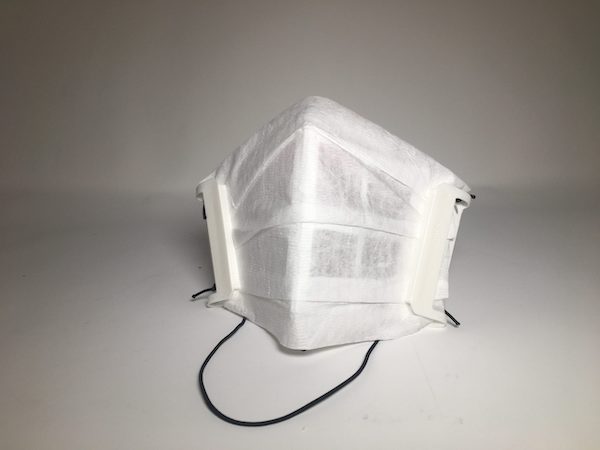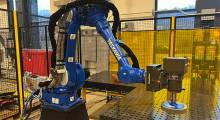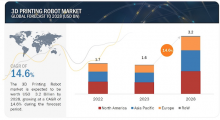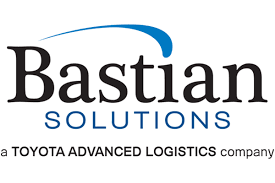One of the many non-human casualties of the COVID-19 pandemic is the global supply chain, which has been seriously upended as economies shut down and fluctuating demand brought logistics and manufacturing to a screeching halt.
One bright spot in the manufacturing and supply chain upheaval is additive manufacturing, which is fast emerging as an alternative way to produce key components at a local site while keeping the flow of goods in motion and the factory floor cycle intact. Strategic use of AM, experts say, can help manufacturers significantly reduce costs and transportation time while mitigating supply chain risks today, in the midst of the pandemic, and in the future as things start to normalize.
That was the topic of a recent virtual panel discussion, The Rise of Additive Manufacturing and Future-Proofing Global Supply Chains.
“2020 has been a challenging year and tumultuous for the supply chain,” said Blake Teipel, Ph.D., CEO and co-founder of Essentium, sponsor of the virtual panel and a provider of industrial 3D printing solutions. “The one question we keep getting asked is is AM ready for prime time and should I use this opportunity to invest in a solution that can help build robustness in my supply chain.”
Given that recent events exposed the lack of supply chain resiliency—early shortages of PPE, for example, and lack of available goods such as toilet paper and airplane parts—organizations are looking for ways to mitigate risks. “The world’s supply chains were optimized for just-in-time delivery, but when you have so many breaks and disruptions, just-in-time creates new vulnerabilities,” Teipel said.
For the aerospace industry, AM has been front and center for a long time, initially as a means for prototyping and later as a force for reimagining part design with an eye towards consolidation through new organic structures that couldn’t be produced with traditional methods, according to Major Alex Goldberg, chief innovation Officer for the Texas Military Department and a participant in the panel. More recently, AM is playing a role in helping the military shift to expeditionary parts production at scale, to provide service (specifically, production of certified parts) at the point of use as opposed to maintaining vast and expensive inventories and incurring the expense and time associated with shipping parts to far-off locations, he explained.
“What used to take months to print, now can be done in days,” he said. Also, instead of having to set up and maintain warehouses of tens of thousands of parts for aircraft at individual bases or ship replacement parts to far flung places, military personnel can simply print parts on demand when needed. “The U.S.Air Force won’t go back to the pre-COVID era—in national security, this is about logistics and this really does help us in that fight,” Goldberg added.
Keselowski Advanced Manufacturing (KAM) founder, owner and former NASCAR driver, Brad Keselowski, says adoption of AM is all about speeding up access to critical parts with or without any subsequent challenges brought on by COVID. KAM regularly employs AM in concert with subtractive technologies to bring car parts to life in hours, not days. “In motor sports, it’s all about speed to market—an engineer can design a new part and they don’t want to wait a quarter, a month or two weeks to get their idea from engineering through manufacturing and QA,” he explained during the discussion. “They want to bolt it on to the race car as fast as possible because that’s the competitive advantage.”
Materials advances are also central to positioning AM as a long-term change agent for transforming the supply chain, contended Volker Hammes, managing director BASF New Business GmbH and another participant on the panel. As manufacturers infuse AM into their production processes, materials should fit the purpose and be evaluated not just in the context of production, but throughout the lifecycle for a circular economy, he said.
While the global pandemic is certainly serving as an accelerator for getting companies to evaluate AM and its potential impact on the supply chain, there is still plenty of work to be done to educate C-level executives on the value while burnishing the skills and expertise of employees. “Pioneers will see it as an opportunity to redesign some business processes in the supply chain and redesign parts and they will be the long-term winners,” Hammes said. “But there are cost-driven industries like automotive and electronics where the economics are too important to introduce technology that may not be ready for large-scale adoption.”
Watch this panel discussion by a group of experts from John Hudson Institute and the Manufacturing Policy Initiatives at Indiana University to dig deep into how U.S. firms and institutions are rethinking the global supply chain in light of the pandemic.
About the Author
Follow Robotics 24/7 on Linkedin
Article topics
Email Sign Up





















